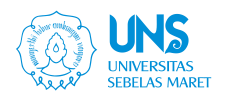Peran Pers bagi Pendidikan Anak dan Perempuan Jawa Pada Masa Pergerakan Nasional
Abstract
Keywords
Full Text:
PDFReferences
Ahmadin. (2017). Sejarah Pergerakan Nasional Indonesia. Makassar: Rayhan Intermedia. Retrieved from http://eprints.unmac.id/id/eprint/14987
Anderson, B. (2002). Imagined Communities Komunitas-Komunitas Terbayang. (O. I. Naomi, Trans.) Yogyakarta: INSIST.
Cahyani, M. G. (2023). Sejarah Perkembangan Pers dan Pemanfaatan Museum Pers Nasional Sebagai Media Pembelajaran Sejarah Masa Pergerakan Nasional. JEJAK: Jurnal Pendidikan Sejarah & Sejarah FKIP Universitas Jambi, 3(1), 27-39. Retrieved from doi:https://doi.org/10.22437/jejak.v3i1.24651
Dacholfany, M. I. (2018). Pemberdayaan Masyarakat Dalam Meningkatkan Mutu Pendidikan Non-Formal di Metro Lampung (Studi Kasus PKBM Al-Suroya). Tapis: Jurnal Penelitian Ilmiah IAIN Metro Lampung, 2(1), 45-46. Retrieved from doi:https://doi.org/10.32332/tapis.v2i1.866
Dewantara, K. H. (1977). Karya Ki Hajar Dewantara Bagian Pertama: Pendidikan. Yogyakarta: Majelis Luhur Persatuan Taman Siswa.
Diniyanti, R. (2020). Potret Gerakan Perempuan Pada Abad Ke 20 di Batavia: Poetri Mardika 1912. Historia: Jurnal UIN Syarif Hidayatullah Jakarta, Vol. 3 No. 2. Retrieved from doi:https://doi.org/10.17509/historia.v3i2.23001
Effendy, O. U. (2006). Ilmu Komunikasi Teori dan Praktek. Bandung: PT Remaja Rosdakarya.
Elfachmi, A. K. (2016). Pengantar Pendidikan. Jakarta: Erlangga.
Fachrurozi, M. H. (2019). Politik Etis dan Bangkitnya Kesadaran Baru Pers Bumiputra. Bihari: Pendidikan Sejarah dan Ilmu Sejarah Universitas Siliwangi Vol. 2 No. 1. Retrieved from https://jurnal.unsil.ac.id/index.php/bihari/article/view/867
Gottschalk, L. (1975). Mengerti Sejarah: Pengantar Metode Sejarah. (N. Notosusanto, Ed.) Jakarta: Yayasan Penerbit Universitas Indonesia.
Jailani, M. S. (2014). Teori Pendidikan Keluarga dan Tanggung Jawab Orang Tua dalam Pendidikan Anak Usia Dini. Nadwa: Jurnal Pendidikan Islam IAIN Sulthan Thaha Saifuddin Jambi, 8(2), 255-256. Retrieved from https://doi.org/10.21580/nw.2014.8.2.580
Juliati, D., & Asnan, G. (2013). Indonesia dalam Arus Sejarah: Masa pergerakan Kebangsaan. Jakarta: PT Ichtiar Baru van Houve.
Kahin, G. M. (1952). Refleksi Pergumulan Lahirnya Republik Nasionalisme dan Revolusi di Indonesia. Cornell University : UNS Press.
Kartini, R. (2005). Habis Gelap Terbitlah Terang. (A. Pane, Trans.) Jakarta: Balai Pustaka.
Kartodirdjo, S. (2014). Pendekatan Ilmu Sosial dalam Metodologi Sejarah. Yogyakarta: Ombak.
Kartodirdjo, S. (2020). Pengantar Sejarah Indonesia Baru: Sejarah Pergerakan Nasional II. Yogyakarta: Ombak.
Malik, A. (2017). Revolusi Gutenberg (Makna Penemuan Mesin Cetak bagi Kemajuan Peradaban Manusia: Dari Tradisi Lisan ke Tulisan). Lontar: Jurnal Ilmu Komunikasi, 2(2), 1-2. Retrieved from doi:https:doi.org/10.30656/lontar.v2i2.342
Nasution. (2020). Sejarah Pendidikan Indonesia. Jakarta: Bumi Aksara.
Pradita, S. M. (2020). Sejarah Pergerakan Perempuan Indonesia Abad 19–20: Tinjauan Historis Peran Perempuan dalam Pendidikan Bangsa. Chronologia: Journal of History Education, Universitas Muhammadiyah Prof. Dr. HAMKA, 2(2), 12-27. Retrieved from https://doi.org/10.22236/jhe.v2i2.6060
Pringgodigdo. (1994). Sejarah Pergerakan Rakyat Indonesia. Jakarta: PT. Dian Rakyat
Sari, D. R. (2019). Analisis Kesalahan Penggunaan Ejaan Bahasa Indonesia (EBI) Pada Kolom Opini Surat Kabar Serambi. Samudra Bahasa: Jurnal Pendidikan dan Sastra Indonesia Universitas Samudra Langsa Aceh, 2(1), 26. Retrieved from https://ejurnalunsam.id/index.php/JSB/article/view/1619
Siregar, I. R. (2023). Analisis Yuridis Diskiminasi Rasial Menurut Hak Asasi Manusia (Studi Kasus Ambroncius Nababan). Lex Privatum, XII(2), 3. Retrieved from https://ejournal.unsrat.ac.id/v3/index.php/lexprivatum/article/view/52105
Sulistiani, Y., & Lutfatulatifah. (2020). Konsep Pendidikan Bagi Perempuan Menurut Dewi Sartika. Equalita: Jurnal Studi Gender dan Anak IAIN Syekh Nurjati Cirebon, 2(2), 118-127. https://syekhnurjati.ac.id/jurnal/index.php/equalita/article/view/7036
Syaadah, R., Ary, M. H., Silitonga, N., & Rangkuty, S. F. (2022). Pendidikan Formal, Pendidikan Non Formal Dan Pendidikan Informal. Pema (Jurnal Pendidikan Dan Pengabdian Kepada Masyarakat): Universitas Islam Negeri Sumatra Utara Medan, 2(2), 125-131. Retrieved from doi:https://doi.org/10.56832/pema.v2i2.298
Urifatulailiyah, N., (2017). Pemikiran Pendidikan Perempuan Pribumi Jawa Dalam Pers Kolonial Tahun 1908-1928. Avatara: Universitas Negeri Surabaya, 5(1), 1481-1494. Retrieved from https://ejournal.unesa.ac.id/index.php/avatara/article/view/17974/16379
Utomo, C. B. (1995). Dinamika Pergerakan Kebangsaan Indonesia. Semarang: IKIP Semarang Press.
Volkstelling 1930 Deel I Inheemsche Bevolking van West-Java. (1933). Batavia: Landsdrukkerij. Diakses pada tanggal 30 Mei 2024 dari Leiden University (universiteitleiden.nl): http://hdl.handle.net/1887.1/item:1085284
Volkstelling 1930 Deel II Inheemsche Bevolking van Midden-Java en de Vorstenlanden. (1934). Batavia: Landsdrukkerij. Diakses pada tanggal 16 Mei 2024 dari Leiden University (universiteitleiden.nl): http://hdl.handle.net/1887.1/item:1110477
Volkstelling 1930 Deel III Inheemsche Bevolking van Oost-Java. (1934). Batavia: Landsdrukkerij. Diakses pada tanggal 30 Mei 2024 dari Leiden University (universiteitleiden.nl): http://hdl.handle.net/1887.1/item:1103217
Wahyuni, B., & Mursal, I. F. (2022). Analisis Masa Pergerakan Nasional Indonesia (1908-1942). Siginjai: Jurnal Sejarah Universitas Jambi (2)1. Retrieved from https://doi.org/10.22437/js.v2i1.18742
Wardani, D. T. (2016). Peranan Surat Kabar Soerapati Dalam Perlawanan Intelektual Pribumi di Jawa Barat Tahun 1923-1925. Patanjala Universitas Padjadjaran, 8(1), 2-3. Retrieved from http://dx.doi.org/10.30959/patanjala.v8i1.54

